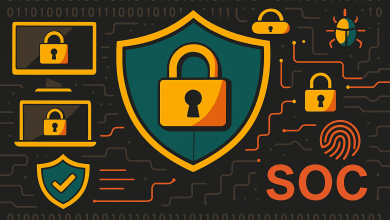
Alexander Rumyantsev is a Software Engineer with over 10 years of experience building scalable systems and microservices architecture. His career includes developing payment and financial systems at Profee, building real estate transaction platforms at Domclick, and modernizing legacy infrastructure across various industries.
Buying something online might feel instant, but behind the scenes there’s a whole variety of security checks designed to keep your card data invisible. Alexander Rumyantsev, a software engineer with deep experience in financial systems, walks us through how tokenization makes this possible, and why it’s reshaping how product teams build payments.
Let’s start with the basics. Can you explain in simple terms how a store can “know” my card without actually storing my card details?
It’s actually quite elegant when you break it down. Merchants don’t store your actual card numbers at all. Instead, they use what we call tokens, essentially placeholders that represent your card information. It is like a claim ticket at a coat check: the ticket isn’t your coat, but it allows the attendant to retrieve your coat when you present it.
When you make a purchase, the merchant receives a token (often a single-use token) that can be sent to a payment system like Visa or Mastercard. These payment networks “know” which actual card number corresponds to that token. So the store only holds a meaningless string of characters, while your sensitive card data remains securely stored within the payment network’s infrastructure.
That sounds like it would change how product teams approach payment integration. What shifts in development scope when you implement tokenization?
The transformation is really significant, and it largely comes down to PCI compliance overhead. When your system directly handles card numbers, you’re dealing with PCI DSS requirements (Payment Card Industry Data Security Standard). This means encryption protocols, regular security audits, secure data storage, network segmentation, and a whole host of other requirements that can be incredibly complex and costly to maintain.
Tokenization reduces PCI compliance needs by removing sensitive card data handling, making development faster. However, this creates a dependency on the tokenization service provider, necessitating careful SLA management and potential backup plans for service outages or performance issues.
Speaking of risk management, what are the top three controls you’d recommend for a growing product to reduce payment-related risks?
First, implement comprehensive monitoring with velocity controls. You want to watch for weird patterns, because too many payment attempts in a short timeframe, multiple failed attempts from the same device, or transactions that deviate from a user’s typical behavior. Device and browser fingerprinting adds another layer here, helping you identify potentially compromised accounts or suspicious new devices.
Second, fast authentication and access controls are absolutely critical, no matter if you use SMS codes, authenticator apps or biometric verification. I’ve seen too many breaches that could have been prevented with proper MFA implementation.
Third, adopt tokenization as early as possible in your product development. The sooner you stop handling raw cardholder data, the sooner you reduce your attack surface. Tokenization is a fundamental security architecture decision that pays dividends as you scale.
There seems to be some confusion about PCI compliance in the industry. What’s the biggest myth you find yourself correcting?
The biggest misconception is that PCI compliance equals complete security.
PCI DSS is designed to address known risks around cardholder data, and it does that well. But fraud and cyber threats don’t stand still, and new attack vectors emerge constantly, social engineering, account takeover, synthetic identity fraud, API vulnerabilities. PCI compliance doesn’t address these modern threats.
PCI compliance is a baseline, not a ceiling. It’s table stakes for handling payment data, but it’s not a comprehensive security strategy. You need to layer additional protections on top of PCI requirements to address the full threat landscape.
For product managers evaluating tokenization solutions, what key questions should they ask potential vendors?
Start with the fundamentals: What’s their uptime guarantee? What happens during an outage? Do they have failover systems? How do they handle peak traffic periods? These operational questions are crucial because your payment processing depends entirely on their infrastructure.
Integration complexity is another key area. How long does typical integration take? What’s their developer documentation like? Do they provide sandbox environments for testing? What ongoing support do they offer?
Finally, understand their compliance posture. Are they PCI DSS Level 1 certified? How often are they audited? What liability protection do they offer? Remember, while tokenization reduces your PCI scope, you’re still responsible for ensuring your vendor meets appropriate security standards.
When a security breach does occur, how does tokenization help limit the damage?
Tokenization dramatically reduces what we call the “blast radius” of a breach. If attackers compromise your database, they find tokens instead of actual card numbers. Single-use tokens are completely worthless, they can’t be used for fraudulent transactions because they’ve already been consumed.
I once implemented a system where we stored tokens for only the minimum time required to complete transactions (usually just a few minutes). If the transaction didn’t complete within that window, the token was automatically deleted. Successful transactions triggered immediate token deletion. This approach meant our database held virtually no tokens at any given moment, minimizing potential breach impact.
How do sophisticated attackers try to bypass tokenization, and what defenses work best?
Attackers exploit system weaknesses surrounding tokens, not the tokens themselves. Single-use tokens and short lifespans are crucial to prevent reuse if multi-use tokens or payment processor integrations are compromised. More often, attackers target upstream vulnerabilities like user accounts (credential stuffing, social engineering), API flaws, authentication systems, or data in transit.
The defense strategy mirrors these attack vectors: strong authentication and authorization, encrypted data transmission, comprehensive API security, and robust monitoring. Rate limiting, anomaly detection, and behavioral analysis help catch suspicious activity before it becomes a breach.
Phishing remains surprisingly effective, even now. Despite all our technical controls, users still fall victim to sophisticated phishing campaigns. This is where user education becomes critical: you need to continuously educate customers about fraudulent behavior and how to protect themselves.
Looking ahead, what do you see as the next evolution beyond tokenization for payment security?
Device-based tokens are already proving incredibly effective. Apple Pay and Google Pay have demonstrated that device-specific tokenization adds a powerful layer of security. Even if payment data is somehow compromised, it’s useless without the specific device and its security elements.
Digital wallets are also gaining momentum because they combine tokenization with additional security features and user convenience. They’re becoming comprehensive payment platforms rather than just storage mechanisms.
But perhaps most exciting is the application of AI and machine learning. We’re seeing generative AI being used both for attack and defense. Fraudsters are using AI to create highly personalized phishing campaigns and generate convincing deepfake media for identity verification bypass.
The response is fighting fire with fire: using AI for fraud detection and prevention. Recent research shows remarkable results in predicting fraudulent transactions by processing vast amounts of behavioral data. Machine learning models can identify patterns that human analysts would never catch, and they adapt to new fraud techniques in real-time.
Any final advice for companies just starting their tokenization journey?
Start early and simple, but think strategically. Don’t wait until you’re forced into tokenization by compliance requirements or a security incident. The earlier you implement it, the easier it is to build secure practices into your development culture.
Choose your tokenization provider carefully, this is a long-term relationship that affects your core business operations. Prioritize providers with strong SLAs, excellent documentation, and responsive support.
Remember that tokenization is part of a broader security strategy, not a universal solution. Layer your defenses, invest in monitoring and incident response, and never stop educating your team and your users about emerging threats.
Most importantly, view security as an enabler of business growth, not a constraint. Good payment security builds customer trust, reduces fraud losses, and allows you to focus on what you do best instead of worrying about compliance overhead.




